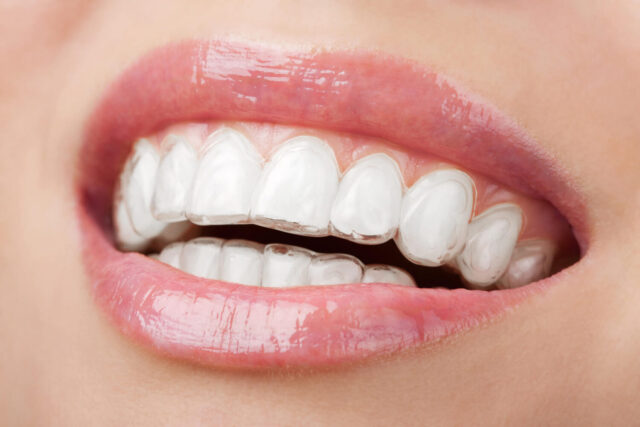
Invisalign treatment is rapidly becoming the preferred method of achieving a straight set of teeth. It is a viable alternative to traditional orthodontic braces that use metal wires and brackets.
Invisalign uses a series of advanced transparent aligners to correct dental deformities, including crowding, spacing, bite issues, etc., just as effectively as braces. However, you must take good care to ensure longevity and maximum efficiency.
What is Invisalign?
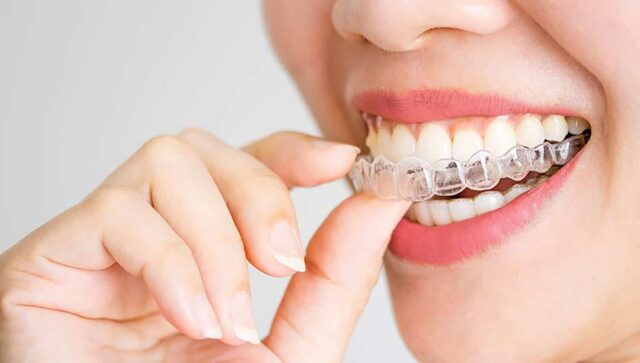
Invisalign is a modern dental treatment modality that uses a series of clear, removable retainers made from delicate yet durable materials to straighten malpositioned teeth. Each subsequent retainer gradually moves your teeth to the desired position employing gentle force until you have achieved the perfect smile of your dreams.
Invisalign is custom-made at the dentist’s office using CAD-CAM technology. As they are transparent, there is no compromise on your aesthetics, and treatment typically remains discreet.
The orthodontic treatment costs similar to traditional band and wire brackets, or they can be slightly more expensive, depending upon the duration of your treatment. The cost of the procedures differs between different states of the U.S., but you will be happy to see the average Invisalign cost Illinois be more or less the same as traditional braces.
You must keep the retainers on for at least 20-22 hours daily to get the desired treatment outcome. You will need a new set of retainers every couple of weeks once the current set of aligners shifts the teeth into the intended position. The treatment can last anywhere between 6 to 24 months, depending on the severity of your condition.
Benefits of Invisalign
There are multiple benefits to wearing Invisalign retainers over metal braces, including:
- Discreet, so no one will notice you are undergoing treatment
- Easy to clean and maintain
- More comfortable and less painful
- Removable for eating and drinking
Best ways to care for your Invisalign retainers
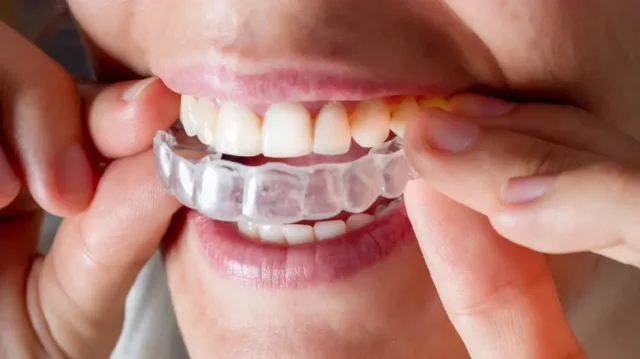
Caring for your Invisalign retainers is crucial to get the most out of your treatment and maintaining a healthy mouth free of plaque and bacteria. Below are some essential tips regarding how you can care for your retainers:
1. Do not eat or drink with your retainers
One of the significant benefits of Invisalign retainers is that you can remove them before eating or drinking. Always take out your transparent aligners before meals to prevent the accumulation of food particles in them. Being able to remove your aligners makes cleaning them easier than braces and can benefit your overall oral hygiene. If you keep them in while you eat, they will be challenging to clean.
Another drawback of eating with your retainers is the chance of damage to the material. Thermoplastic materials are delicate and can easily break in contact with sharp objects. Broken aligners are rendered useless and require replacement, adding to the cost and hassle of your treatment.
Drinking with them might seem innocuous, but it is not. Hot and cold beverages can stain your trays. There is a potential for more damage if you habitually consume beverages while wearing the retainers. However, drinking water is perfectly safe.
2. Thoroughly clean your retainers
The best way to care for your aligners is to clean them whenever you remove them to prevent stains and foul smells. Rinse them after each use. For more thorough cleaning, you may follow these methods once or twice a week:
Soft brush and water
Take a soft brush and rinse the retainers with lukewarm water. Gently scrub the brush inside and outside of the retainer. Make sure you remove all the tartar or calculus deposits stuck inside before putting them on.
White vinegar
If you notice staining, hard plaque, or tartar deposition on the aligners, cleaning them with a solution more potent than water might be a better approach. Vinegar can act as a good disinfectant, and the distilled form of white vinegar is very effective in removing plaque buildup and bacteria.
All you need to do is soak the aligners in white vinegar and lukewarm water for a few minutes. Then you rinse off the mixture with cold water, and you’re left with a clean set of aligners.
Hydrogen Peroxide
Diluted bleaching agents such as hydrogen peroxide are also a cost-effective way to clean dirty aligners due to their antibacterial properties. Soak your retainers in a solution comprising equal amounts of peroxide and water for 10- 20 minutes and thoroughly rinse them with water before wearing them.
3. Properly store the aligners
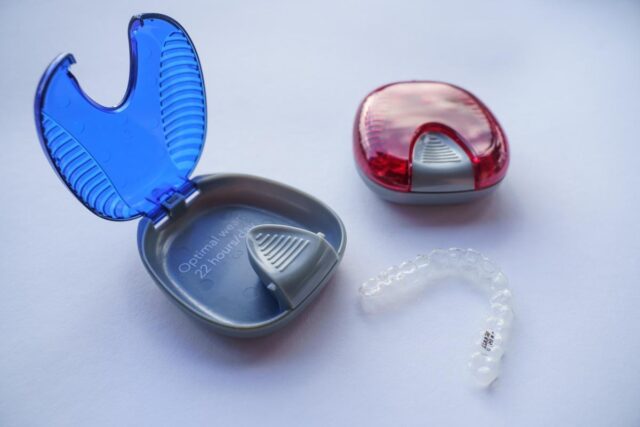
Optimal care for aligners includes proper storing when not in use. Keep the aligners in the case provided, or purchase an airtight container to store them. A good storage container will help you avoid losing or damaging them accidentally while preventing harmful bacteria from attaching to them.
4. Avoid hot water
Avoid using hot or boiling water during cleaning, as it can warp the aligners. These advanced orthodontic devices are made of flexible thermoplastic materials that change shape in response to heat application. Therefore, hot water can disfigure the Invisalign retainers and render them useless.
5. Do not use harsh chemicals
Harsh chemicals like concentrated bleaches can chemically destroy the retainers and damage your mouth. Even denture cleaning solutions can be too overwhelming for the aligners. Strong chemicals can create micropores in the aligners, so it is better to avoid them.
6. Avoid soaking in mouthwashes
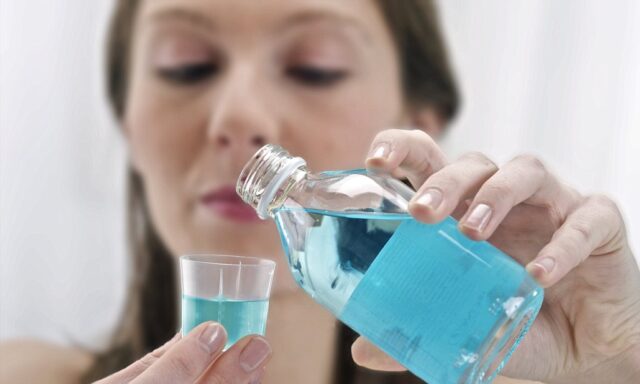
Mouthwashes are great solutions for clearing up infections and foul smells from your mouth. That might make you consider it a perfect method for treating the aligners. But the truth is that mouthwashes are not designed for cleaning Invisalign retainers and can stain your aligners due to the color. Additionally, mouthwashes containing alcohol can also disfigure your retainer.
Conclusion
Invisalign retainers are highly effective and aesthetically acceptable dental appliances for treating numerous orthodontic abnormalities.
To ensure the longevity of the retainers, you must clean them routinely by rinsing them when you take them out. Scrub with a bristle brush and lukewarm water, or soak them in a white vinegar solution for a few minutes.
Also, avoid eating and drinking with your Invisalign retainers to prevent plaque and tartar buildup.
Abstain from soaking the retainers in mouthwashes, denture cleaning solutions, and concentrated bleaching agents. Store them in the case when you’re not using them to avoid losing or damaging them.









